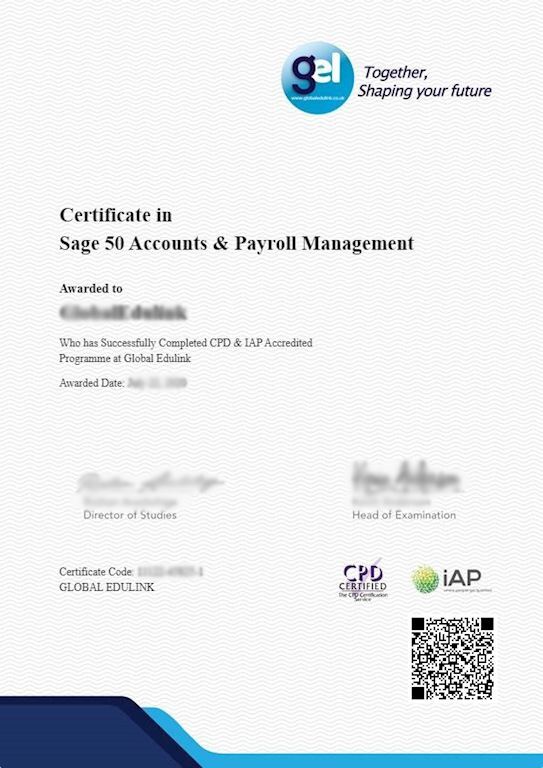- Duration / Course length: Upto 25 Hours Start now
- Accredited by: CPDiAP
- Certificates:
- Course delivery: This course is delivered in video format
Course details
Finally, an incredible, comprehensive, and informative course designed to increase the understanding of the structure and function of the human body
With this course, provided by Global Edulink, a respected and leading online training provider, you're taken on an extensive journey through the anatomy and physiology of the human body starting with the cardiovascular system (the heart and vessels), through to the respiratory system (the lungs), then the nervous system (and its connection to the brain, spinal cord, eyes, ears, and memory), over to the digestive system (mouth, pancreas, small, and large intestines), the endocrine system (pancreas and thyroid, kidneys, ureters and bladder), also male and female reproductive systems, the musculoskeletal system (muscles and bones), the immune system, and finally(!), the biology of human cancer.
You'll be in wonderment at the remarkably complex, resilient, and endlessly fascinating structure that is the human body, expounded through the use of life-sized models, detailed colour illustrations, and even video shot during surgery, and in clear, step-by-step explanations aimed at the level of the interested layperson. You'll gain an understanding of exactly how things work and why they sometimes don't work.
Use this course as a brilliant introduction to the medical world and gain a superb, holistic overview of anatomy and physiology from a qualified educator. Also, this could be used as a fantastic stepping stone within your medical career, or for personal knowledge.
Course Curriculum
- Learning cardiovascular system - anatomy of the heart
- Learning cardiovascular system - physiology of the heart
- Cardiovascular system - anatomy of the great vessels
- Cardiovascular system - physiology of the great vessels
- Understanding respiratory system - anatomy of the lungs
- Understanding respiratory system - physiology of the lungs
- Nervous system - anatomy of the brain
- Nervous system - physiology of the brain
- Nervous system - spinal cord and spinal nerves
- Nervous system - autonomic nervous system and cranial nerve
- Nervous system - the eyes
- Nervous system - the ears hearing and equilibrium
- Human nervous system in memory
- The digestive system anatomy of the mouth esophagus and stomach
- Understanding digestive system physiology of the mouth esophagus and stomach
- Learning digestive system anatomy of the pancreas liver
- Learning digestive system physiology of the pancreas, liver, and the biliary tree
- Understanding digestive system anatomy of the small intestine colon and rectum
- Explore digestive system - physiology of the small intestine colon
- Explore endocrine system - the pituitary and adrenal glands
- Identify endocrine system pancreas
- Parathyroid glands and endocrine system thyroid
- Ureters and bladd in urinary system anatomy of the kidneys
- Ureters, and bladder in urinary system physiology of the kidneys
- Male and female reproductive system
- Learn reproductive system physiology of genetic inheritance
- Physics and musculoskeletal system physiology of the muscles
- Understanding musculoskeletal system anatomy and musculoskeletal system bones
- Anatomy and physiology of the immune system
- Understand the biology of human cancer
- High quality e-learning study materials and mock exams.
- Tutorials/materials from the industry leading experts.
- 24/7 Access to the Learning Portal.
- Benefit of applying NUS extra Discount Card.
- Recognised Accredited Qualification.
- Excellent customer service and administrative support.
Successful candidates will be awarded a Diploma in Anatomy and Physiology of Human Body.
Ultima actualização em 10 December, 2024
Eligibility / Requirements
- This course is available to all students, of all academic backgrounds. However, a sound educational background would be an advantage.
- Basic understanding of English language, literacy, numeracy and ICT are required to attend this course.
- Learners should be ages 17 or over to undertake the qualification.
.jpg)
.jpg)


.jpg)
